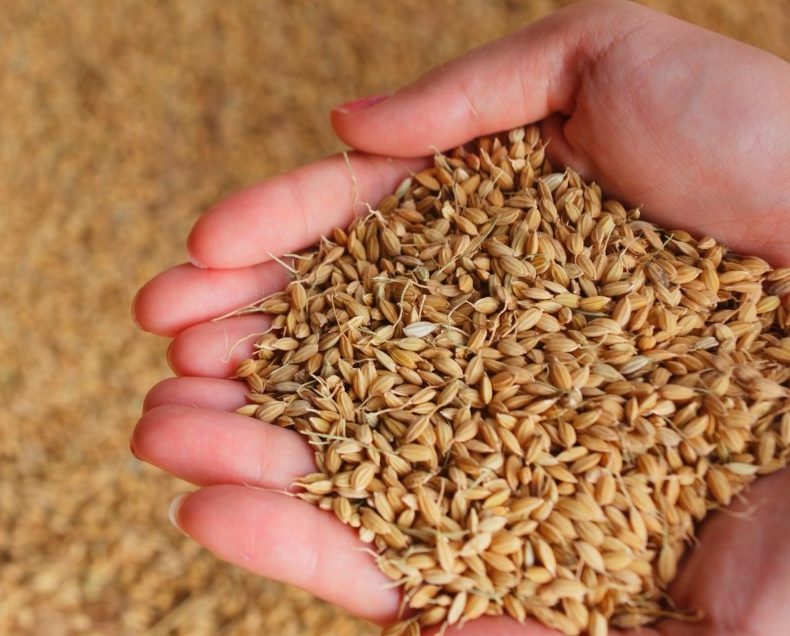Healthy Eating with Whole Grains

The Dietary Guidelines for Americans recommend consuming nutrient-rich foods, including at least half the grains in your diet whole grains. Here's what you can do.
Whole grains can get a bad rap. They’ve often been dense, heavy, and too obviously good for you rather than great tasting. Yet the health benefits of whole grains are piling up, and many options are now available that favor flavor, too. Below, we explore why you should incorporate more of these nutritional powerhouses into your diet.
The Dietary Guidelines for Americans recommend consuming nutrient-rich foods, making at least half the grains in your diet whole grains. But what’s so wrong with refined grains?
The problem is in what refined grains do to your body. Refined grains — found in white bread, white rice, and other highly processed foods — don’t retain many nutrients. When grains are refined through milling, the bran and germ — the nutritionally richest part of the plant — are removed. So, while the milling process might create flour perfect for pastries, those pastries have a price.
YOU MIGHT ALSO LIKE: What Are Sprouted Grains?
When you eat white rice, for example, your body quickly converts it to energy, resulting in a blood sugar spike. Then, an hour or two later, you experience an energy crash. You may feel sluggish, tired, or downright sleepy — and, adding insult to injury, you’ll soon feel hungry again, too. It’s a dietary roller coaster that’s been linked to type 2 diabetes.
In contrast, when grains like rye, barley, and wheat are milled to retain the full seed, foods made from them are denser, more nutrient-rich, and don’t head straight for your blood sugar. Foods with complex carbohydrates, like whole grains, take longer for your body to process and digest, meaning your energy levels stay steady longer.
Meanwhile, the fiber and bran in whole grains keep blood sugar low and help prevent bowel problems. Whole grains also contain far more nutritional value, since they retain the many minerals and phytochemicals found in plants.
Whole grains have tremendous health benefits. They lower “bad” (LDL) cholesterol, triglycerides, and insulin levels, while reducing the risk of cardiovascular disease, type 2 diabetes, and even death.
An analysis published in the medical journal BMC compared whole-grain consumption among more than 367,000 Americans over the course of about 15 years. The results showed those who consumed the most whole grains had a 17 percent reduced risk of death from any cause compared to those who consumed the least, along with an 11 to 48 percent reduced risk of dying from specific diseases, such as cancer or cardiovascular disease.
Whole grains may also have anti-inflammatory benefits, the study’s authors concluded. That echoes another study of more than 40,000 women that found those who consumed two to three servings of whole grains daily were 30 percent less likely to die from inflammation-related conditions over 17 years than women who rarely or never ate whole grains.
Like many aspects of reading the fine print on nutrition labels, identifying foods made with whole grains at the grocery can be complicated. You can look for the “Whole Grain” stamp found on many foods, but a study comparing the nutritional value of various whole grain foods found those with the stamp were often higher in sugar and calories than others. Many healthy whole-grain foods don’t even carry the stamp, which requires manufacturers to be paid members of the Whole Grain Council.
In the absence of labeling that reads “made with 100 percent whole grains” — hands down, the best option — follow a simple rule of thumb: Make sure the first ingredient starts with “whole” (as in whole wheat flour). By law, ingredients must be listed in order by weight, so checking food labels will ensure you’re getting mostly whole grains. Then, check the sugars and fiber. You’ll want to stay below 8 grams of sugar, and ideally get 4 or more grams of fiber, per serving. Don’t forget to check calories.
A few caveats:
- While a high-fiber count is a good sign of a healthy food, it’s not always an indication of whole-grain ingredients, since fiber can come from many sources.
- Watch for terms like multigrain, which only means the food is made with more than one grain, not all of which may be whole.
- “Made with whole grains” could also mean any amount — even a tiny one.
The bottom line? New options, carefully chosen, mean whole grains can be just as delicious as refined foods, so you won’t feel like you’re missing out — and you may appreciate how they make you feel full over a much longer period of time. The trick is to incorporate whole grains the right way.
You can get whole grains from a variety of foods, not just bread and cereal. Consider brown rice, wild rice, buckwheat, and quinoa. If you’d like to try whole-wheat pasta, start by combining it at 50 percent with pasta made from semolina, which is refined. Kids, especially, will likely barely notice the difference in taste, but they’ll get far better nutrition.
In addition, all forms of oatmeal (except instant) qualify as whole grain — and air-popped popcorn, made at home with a sprinkling of olive oil or parmesan cheese and a touch of salt, does, too.
If you have a sweet tooth, substitute a morning chocolate croissant for a dark-chocolate chip muffin made with whole-wheat flour, almond meal (for added protein and healthy fats), and a bit of bran (for added fiber). Not a bad breakfast trade for something that will keep you full and alert until lunch.
Updated:
November 08, 2022
Reviewed By:
Janet O’Dell, RN